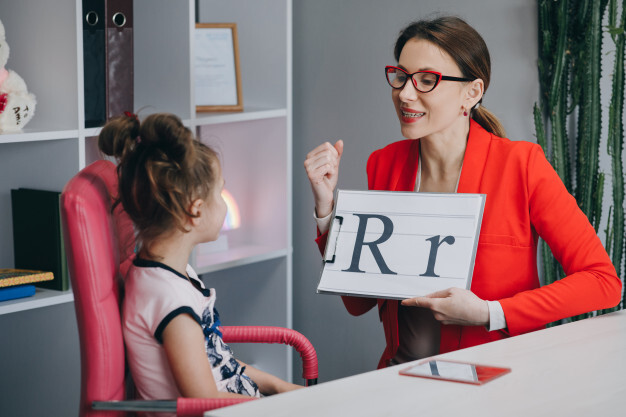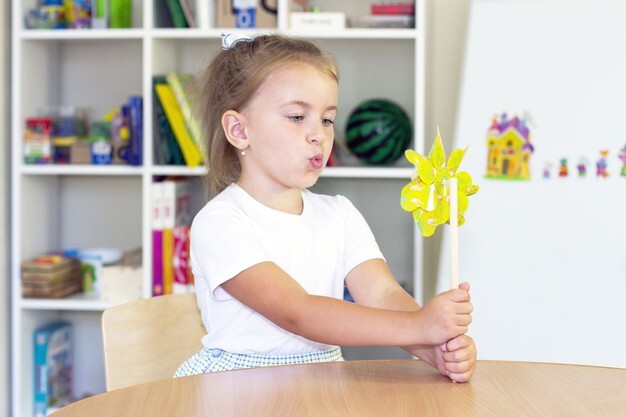What are Speech Sound Disorders?
A gift that most of us take for granted in life is the effortless
A gift that most of us take for granted in life is the effortless flow of fluent speech. Fluent speech allows us to communicate with one another comfortably, effectively, and unselfconsciously. The tongue, teeth, lips, and jaw (a group of body parts collectively referred to as “the articulators” by speech language therapists) must work together in flawless choreography to connect sounds to form even the simplest of words. Take the short word “cat,” as an example. To speak this word aloud, we must almost-but-not-entirely close our jaw, pull back our tongue, push up our soft palate to block the nasal passage, and push the right amount of air gently and consistently out from our lungs.. just to form the /k/ sound that starts the word!! The subsequent /a/ in the middle of “cat” then requires us to adjust the degree of jaw closure to make our jaw a little wider – but not too wide, push our tongue flat to the bottom of our mouth, and provide more breath support. To form the final /t/ sound, our tongue must next travel quickly forward to the front of the mouth to touch behind the upper teeth with precise pressure and duration, and the jaw must again adjust its angle. Only when this sequence is performed with exact precision does the intended message come across. All of these precise fine motor movements need to be completed in the span of less than a second, and without error. Speech requires, therefore, complex muscle memory. Now take two, three, four, or more simple short words and string them together in a phrase or sentence, and you have performed a dizzying synchronism of muscle movement, a literal tongue twister, with effortless grace. Like almost anything else in life, this effortless skill is born from uncountable hours of practice.
Most of the time, babies will start imitating sounds that are visible on our lips (called “visemes” by your speech therapist) such as P, B, and M before any other sounds. Because these sounds are visible, speakers are unintentionally giving new speakers (aka: babies) visual as well as auditory clues about how to formulate and imitate these specific sounds. Babies must practice very basic repeated sequences of movement (e.g.: bababababa”) before they learn to begin mixing up the sequences more and more (e.g.: “bahbidu”). Babbling is baby’s first articulation practice!

Sound exploration and experimentation intrinsic to babbling is an important keystone in the development of speech and language skills for every baby. It is a definite concern if your baby is not making sounds and babbling every day by 6-8 months. To promote babbling, incorporate music into your daily routines, practice vocalizing back and forth with your little one with a sound as simple as “ahh,” and show them how to be noisy with their mouth by bouncing the back of your hand over your mouth repeatedly to make a “wahwahwah” sound or using a finger to part their lips and make silly sounds.
Even after we start trying to talk and say specific sounds in words, our little mouths need lots of practice before they are reliably able to coordinate the long sequences of sound needed for human communication. The older children get, the more complex their thinking becomes, and they may attempt to express themselves in longer sentences. Thus, kids with a lot to say and a hard time coordinating the movements needed to say it quickly can become very frustrated. There is no connection between intelligence and speech sound disorders. Although there can be a comorbidity between speech disorders, language disorders, and literacy disorders, the presence of a speech disorder does not reflect in any way the intelligence of the individual.
All children make mistakes with speech sounds when they are first learning to talk. Expected errors like leaving final sounds off (e.g.”ba” instead of “ball”), avoiding sounds made in the throat (e.g.: “tootie” for “cookie”), reducing clusters of consonant sounds (e.g.: “sip” for “slip”), and having trouble pronouncing English’s more challenging speech sounds like “r, s,” or “th” are all normal, natural, and expected stages of learning to talk. Speech sound disorders are diagnosed when a child retains these developmental speech errors beyond the expected age. Some kids need extra time and repetition practicing challenging speech sounds before they get it just right. In speech therapy, and with Kokolingo, they begin by practicing the isolated target sound by itself, then in small but ever-growing words, phrases, and then sentences.

Speech sound errors sound cute when kids are teeny tiny, but as they grow older, speech sound disorders can contribute to a lot of frustration for a child when listeners cannot commonly understand them and they must habitually repeat themselves or resort to wild gestures to be understood. As previously stated, speech disorders are not connected in any way to intelligence level or cognitive skill, meaning that many kids who have a hard time expressing themselves may have a lot of interesting things to say! These kids can heartbreakingly learn to altogether avoid situations where they believe they may have to speak. This avoidance protects them from the embarrassment and shame that can accompany speech sound errors in a social setting.
We can break speech sound disorders into 2 different classifications: articulation disorders and phonological disorders. Each of these classifications is unique in concept, diagnosis, and treatment. Articulation disorders refer to challenges with specific speech sounds on an individual basis (e.g.: the notorious /r/ sound that so many middle schoolers struggle with). With an articulation disorder, the child’s other speech sounds are unaffected, and the focus is on one or more unrelated sound errors. Phonological disorders, in contrast, contain identifiable and predictable patterns of related speech sound errors.
This might look like a pattern of always producing throat sounds (/k, g/) in the front of the mouth instead of in the throat. This particular phonological process is called “fronting” by your speech therapist. The pattern of fronting is manifested in the classic mispronunciation of asking for a “tootie” instead of a “cookie.” A child with this phonological process would also be expected to front other throat sounds like the /g/ sound in “go,” which might come out as “doe” instead.
The cause of speech sound disorders can be quite varied and is sometimes unknown. Some possible causes may be structural anatomical differences (for example when dentition is incomplete or abnormal - loose tooth, anyone? - or with a diagnosis like cleft palate), physiological differences (as in dysarthria), motor difficulties (as in the cases of apraxia, stroke, or cerebral palsy), or sensory (as in the case of hearing loss). The cause of the difficulty in pronunciation is important to identify whenever possible. If the cause is structural, the priority may be to fix the structure with orthotics or surgery before any amount of speech therapy can resolve the problem further. If the cause of the speech sound disorder is related to any degree of hearing loss, speech therapy will not help much until and if the child’s hearing status improves.

Your child’s speech therapist can make an individualized plan to correct speech sound errors. Multisensory learning is usually incorporated into therapeutic practice, including visual, auditory, and tactile cues. Usually choosing the easiest error to correct first will give your child a boost of confidence with their communication and can also have spill-over effects into other identified speech sound errors. Your therapist will help your child learn to make the sound on its own, then introduce practice that requires more and more sequencing in longer words, phrases, sentences, and paragraphs. Your child will be ready to graduate from speech therapy when they can produce the target sound correctly during conversational connected speech. The total amount of time that treatment takes varies greatly among clients and may depend on a variety of factors including: number and type of errors, age and motivation of the client, resolution of the cause of the error(s), and frequency, focus, and length of speech therapy visits. The accomplishment of correcting a speech sound error reflects hours of concerted, intentional practice and effort. You may observe a new social and conversational self-assurance in your child when they have learned to speak with more confidence and skill. Kokolingo can help you and your child along the way on this journey!
Teal Radford- M.A. CCC-SLP